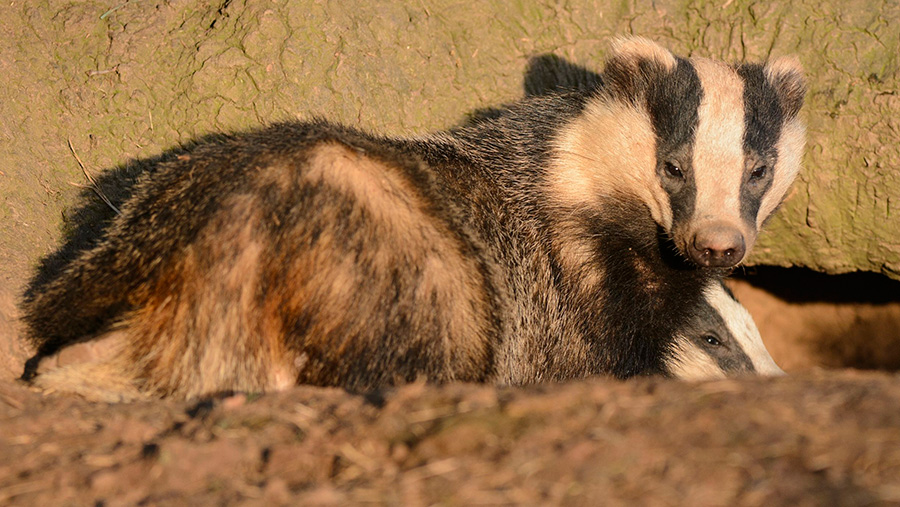More than 32,000 badgers killed in fight against bovine TB
 © FLPA/Andrew Mason/Rex/Shutterstock
© FLPA/Andrew Mason/Rex/Shutterstock A total of 32,601 badgers were culled in England this autumn as part of government plans to eradicate bovine TB.
The government’s official report into the badger control operations, which lasted at least six weeks between 3 September and 1 November, was published on Tuesday 18 December.
Badger culling took place in 32 areas across 10 counties this year – in Cheshire, Cornwall, Cumbria, Devon, Dorset, Gloucestershire, Herefordshire, Somerset Staffordshire and Wiltshire.
See also: Bovine TB strategy – review’s main findings
Defra chief vet Christine Middlemiss said the culls were working to reduce outbreaks of TB in cattle.
“The initial cull areas are starting to see these benefits, with the number of new confirmed cattle breakdowns dropping by about 50%,” Dr Middlemiss said.
“In Area 1 [Gloucestershire], the incidence rate has dropped from 24% to 12% in the 12 months following its fourth year of culling. Similar results were observed in Area 2 [Somerset], which dropped from 10.4% to 5.6%.”
However, the 2018 data from these two areas, which are both licensed to carry out supplementary badger culls following the end of four years of culling, is not revealed in the report. “The data will be revealed in due course,” it says.
Badger cull monitors observed 89 badgers being shot at using controlled shooting, of which six appeared to be missed and three appeared to be hit but were not retrieved, the report says.
The “non-retrieval rate” observed in 2018 – in which the badger carcass was not retrieved – was 10.1% (95% confidence interval 5.1-17.6%).
Based on this evidence, the level of accuracy of controlled shooting compares favourably with other control activities currently accepted by society, such as deer shooting, the report says.
Since badger culling began in 2013, some 67,154 badgers have been killed at an estimated cost of more than £50m to the taxpayer.
Commenting on the report, NFU vice-president Stuart Roberts said: “Last year more than 33,000 cattle were slaughtered in England because of bovine TB and more than 3,800 farms that had been clear of the disease were affected by it.
“No one has ever said culling alone will eradicate bovine TB. To tackle bTB we must utilise a comprehensive strategy which uses all available options – cattle testing, cattle movement controls, on-farm biosecurity, vaccination of badgers in areas on the edge of disease spread, and control of badgers where their presence may contribute to the spread of disease.”
On-farm biosecurity
Defra and the Welsh government have also published a joint report with industry, setting out recent progress and next steps on improving on-farm biosecurity – a key focus of Sir Charles Godfray’s recent independent review of the government’s 25-year bovine TB eradication plan.
This report sets out a new programme of action designed to increase farmers’ resilience to bovine TB, including a £25,000 investment to improve the TB Hub website – the central hub for information on the disease.
New incentives for farmers to strengthen biosecurity on bovine TB
Farmers who have managed to stay clear of bovine TB for at least six years will be able to revert to annual, rather than six-monthly, testing.
This will reduce the testing burden on these lower-risk farms and incentivise other farms to take steps to reduce their TB risks, Defra said on Tuesday 18 December.
The change will come into effect in May 2019 and will apply to farmers in parts of the bovine TB Edge Area.
The six-monthly testing also applies to farmers who have achieved Cattle Health Certification Standards (CHeCS) TB accreditation of their herds.
Farm minister George Eustice, said: “Bovine TB remains the greatest animal health threat to the UK, causing devastation and distress for hard-working farmers and rural communities.
“By allowing these lower-risk herds to revert to annual testing, we want to encourage other farmers to take steps to reduce the risks of bovine TB.”
